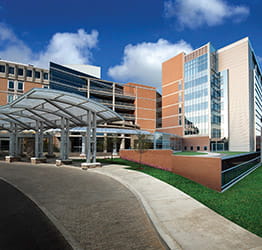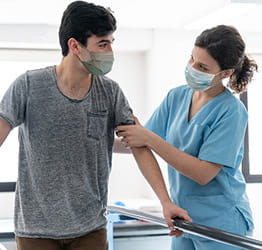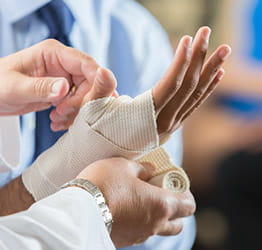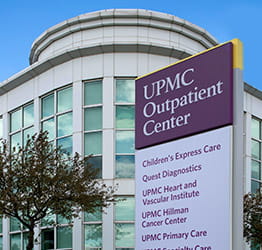On this page:
What Are Dry Eyes?
Doctors define dry eye syndrome as an issue related to tears and the inability to keep eyes wet. Also called dry eye disease, it can happen when tears, tear glands, or tear ducts don't function as they should.
Tears are vital for eye health and vision. Created by tear glands behind the upper eyelid, they nourish the eye with lubrication and wetness. This lubrication keeps the eye's surface clean and provides vision for everyday life.
Tears flow into tear ducts, the tiny openings in the corner of the eyelids, where they drain away. When tears aren’t being created properly, dry eye syndrome can occur. This can create uncomfortable symptoms in and around the eyes, including severe vision problems.
Dry eye syndrome is often a chronic condition, particularly in older adults. Many options are available to increase your tear production or mimic tears to keep your eyes lubricated, clear, and clean.
What causes dry eyes?
Dry eyes occur when your tears don't function properly.
This could mean:
- Your tears dry up too fast.
- Your tear glands don't create enough tears.
- Your tears aren’t working well enough to lubricate the eyes correctly.
- Your tear glands and tear ducts aren't in balance.
Dry eyes can be caused by things most people do every day, like staring at a computer screen, spending time outdoors, being in air-conditioned or heated environments, or just having a long day and being tired.
What are the risk factors and complications of dry eyes?
Dry eye syndrome risk factors
While dry eye syndrome can affect anybody, your risk increases if you:
- Are a woman.
- Are over the age of 50.
- Don’t get enough vitamin A or omega-3 fatty acids.
- Drink alcohol.
- Have had certain eye surgeries, such as LASIK.
- Have certain autoimmune disorders, such as lupus.
- Smoke.
- Use certain medications, such as antidepressants or antihistamines.
- Wear contact lenses for long periods of time.
Complications of dry eyes
If left untreated, dry eyes can damage the eye's front surface or permanently impair vision.
How can I prevent dry eyes?
For many adults, dry eye disease is part of the aging process. Still, there are some measures you can take to prevent and reduce the symptoms of dry eyes.
These include:
- Avoiding drier environments, such as high elevations or arid deserts.
- Blinking regularly, especially when sitting in front of screens for an extended time.
- Drinking eight to 10 glasses of water each day to prevent dehydration.
- Increasing the humidity of the air in your home and workplace.
- Wearing sunglasses outside to reduce sun and wind exposure.
How common are dry eyes?
Dry eye syndrome is common, affecting millions of Americans every year.
Back to top.
What Are the Signs and Symptoms of Dry Eyes?
You may be experiencing dry eye syndrome if your eyes are:
- Feeling itchy or scratchy.
- More watery than usual.
- Producing stringy mucus.
- Red.
- Sensitive to light.
- Stinging or burning.
- Struggling to see clearly.
When should I see a doctor about my dry eye symptoms?
If you have any of the above symptoms, you should schedule a visit with your eye doctor. Dry eye disease can cause lasting damage to your eyes and your vision, so it’s important not to delay seeking medical attention.
Back to top.
How Do You Diagnose Dry Eyes?
Your eye doctor will perform a slit lamp examination to diagnose dry eye syndrome. Just like during a regular eye appointment, your doctor may use eye drops to dilate your pupils so they can check your eyes for other issues besides dry eye.
To test the quality of your tears, your eye doctor may:
- Evaluate your eyelids and cornea with a bright light and magnification.
- Examine the outside structure of the eye, including your eyelids and blinking reflex.
- Measure the quality and quantity of tear production, which could include special dyes to show tear flow.
Your doctor may also ask about your tears and how often you're experiencing symptoms.
Back to top.
How Do You Treat Dry Eyes?
There are many treatment options available for dry eye disease. Some people have chronic dry eyes but can still find remedies to keep their eyes lubricated and their vision clear.
Treatment focuses on restoring or maintaining a normal amount of tear production for daily function and to lessen dryness and discomfort.
During or after treatment, alert your doctor if your dry eye gets worse and interferes with daily activities.
Eye drops for dry eyes
Eye drops are the most common and effective way to treat dry eye disease.
People with mild dry eye disease typically use artificial tears, which can be bought without a prescription at most stores. You can also find over-the-counter (OTC) moisturizing ointments and gels that may help.
Eye drops meant to treat red, bloodshot eyes may worsen dry eyes, so be sure to read the labels or talk to your doctor before purchasing eye drops.
Medicine for dry eyes
Your doctor may prescribe medicine if your dry eye is more severe. These drugs typically help your tear glands produce more tears.
To decrease symptoms and increase comfort, your doctor may prescribe:
- Eyelid cleaners.
- Eyelid massages.
- Prescription eye drops, to increase tear production.
- Prescription ointments.
- Warm compresses.
Lifestyle changes for dry eye syndrome
Similar to the lifestyle changes that prevent dry eyes, these methods can also help reduce symptoms if you're experiencing dry eyes.
To help reduce the severity of dry eye disease:
- Avoid cigarettes and alcohol.
- Drink water.
- Limit screen time.
- Use a humidifier.
- Wear sunglasses.
It’s also important to monitor your sleep schedule. You should sleep at least seven hours every night to prevent tired, overworked eyes.
Tear duct plugs
Some people have dry eyes because their tear ducts are draining tears too quickly, so doctors may suggest tear duct plugs. Conserving tears will help keep your natural tears in your eyes longer. Your doctor will discuss how these special plugs (punctal plugs) are inserted and how they function.
Dry eye from other eye conditions
In some instances, other health issues cause dry eyes. Treating that condition may improve dry eye symptoms.
Talking with your doctors about your overall health can help determine what's causing your dry eyes.
Surgery for dry eyes
Rarely, in more severe cases, your doctor may suggest eyelid surgery.
Surgery is performed if your bottom eyelids are too loose, causing tears to drain too quickly. Surgery is rare with dry eye syndrome, and doctors will work to find other solutions first.
Back to top.















